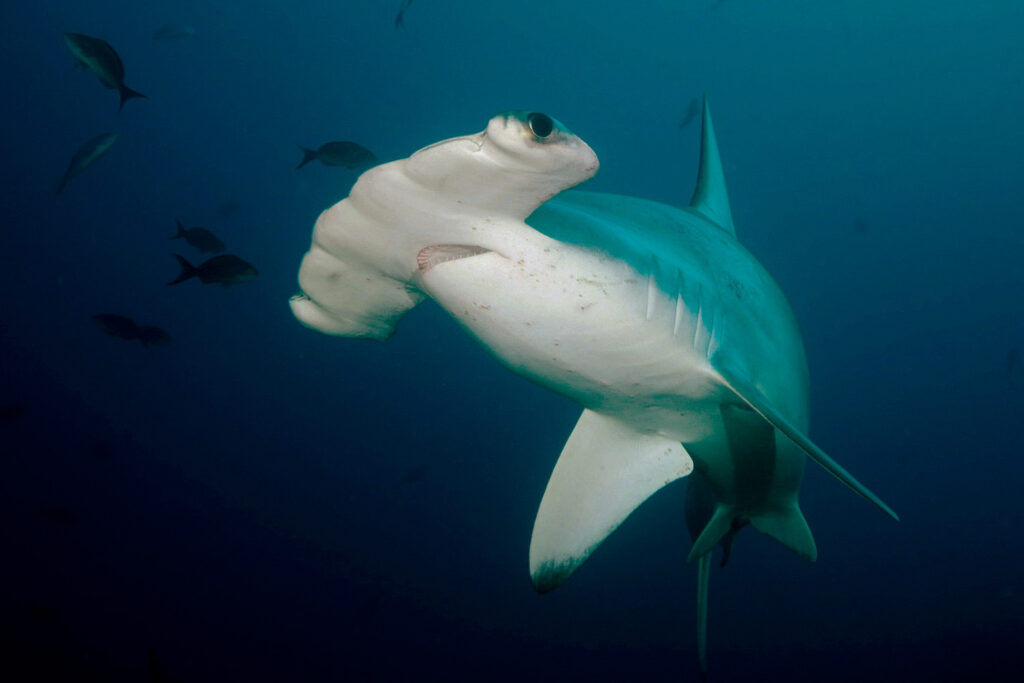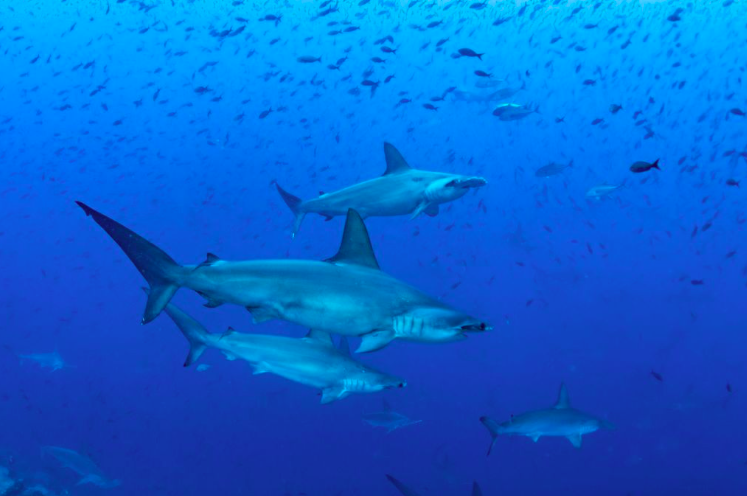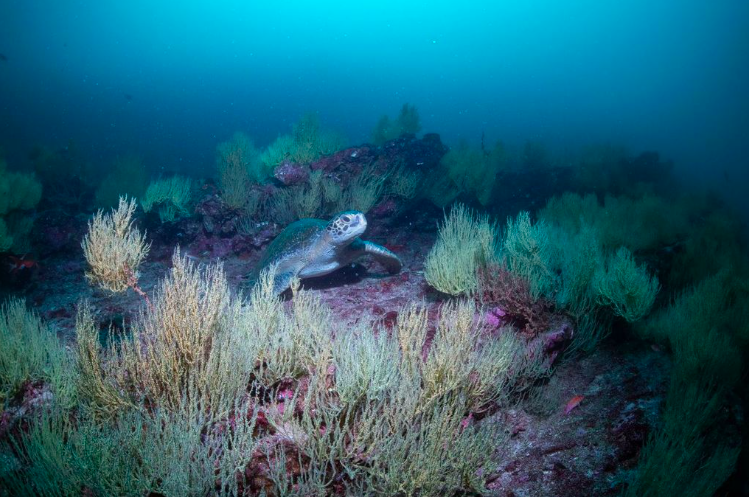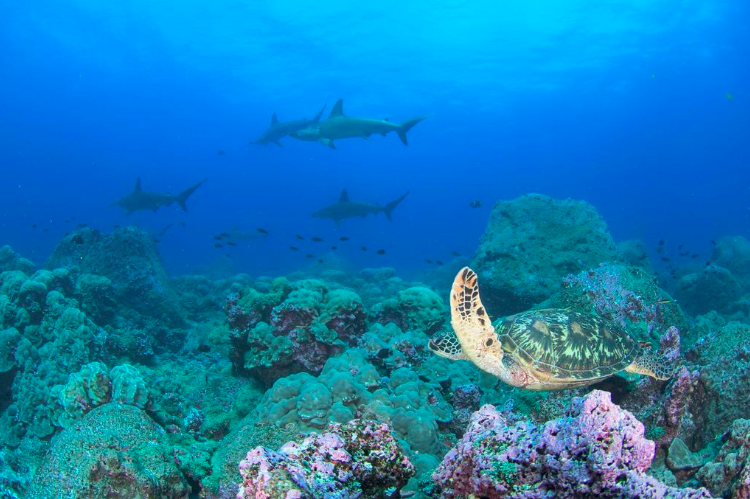At Ecoventura, the proud owner of Galapagos Sky, we are deeply committed to preserving the pristine beauty of the Galapagos Islands. Our passion for conservation and sustainability drives our partnership with key organizations and supports various vital initiatives aimed at protecting this extraordinary ecosystem. Here’s a closer look at some of the crucial efforts we support to safeguard the Galapagos:
The Galapagos Biodiversity and Education for Sustainability Fund (GBESF)
Established on July 31, 2017, the Galapagos Biodiversity and Education for Sustainability Fund (GBESF) represents a collaborative effort among Ecoventura, the Galapagos National Park, and the Charles Darwin Foundation (CDF). This fund embodies our shared commitment to conserving the Galapagos Islands’ remarkable marine and terrestrial biodiversity.
Our ongoing partnership with the CDF, the oldest and largest scientific institution in the islands, has been instrumental in advancing conservation efforts. Since its establishment, the GBESF has received significant support from Ecoventura, with a total of $476,872 awarded to date. These funds have bolstered CDF’s scientific research, conservation projects, and monitoring activities led by the Galapagos National Park.
In addition to supporting scientific endeavors, the GBESF recognizes the crucial role of local youth in safeguarding the islands’ future. By funding innovative educational projects and providing scholarships, the fund empowers young people to become active guardians of the Galapagos.

Sharks in the Galapagos Marine Reserve and Beyond
Understanding the movements of sharks within and beyond the Galapagos Marine Reserve is vital for their conservation. Sharks face significant threats from illegal, unreported, and unregulated fishing, making it essential to track their migratory patterns to protect their populations effectively.
The Charles Darwin Foundation’s Shark Ecology and Conservation Program has been at the forefront of this research. Notably, the program has focused on scalloped hammerhead sharks, categorized as Critically Endangered by the International Union for Conservation of Nature (IUCN). Tagging and monitoring these sharks have been crucial for establishing the Hermandad Marine Reserve, a protected area identified through their movements as essential for their survival.
One remarkable example is Cassiopeia, a pregnant scalloped hammerhead shark tagged with the support of the GBESF. Cassiopeia’s journey, covering over 4,000 kilometers (2,485 miles) from the Galapagos to her birthing grounds in Panama, provided invaluable insights into the connectivity between the Galapagos and mainland coastal areas. Unfortunately, some tagged sharks were caught and landed at regional fishing ports, underscoring the need for improved regional management to reduce mortality rates.

Sea Turtles in the Galapagos
The COVID-19 pandemic temporarily reduced tourism in the Galapagos, allowing sea turtles to experience less crowded nesting and feeding sites. This shift prompted the CDF’s Sea Turtle Conservation Program to investigate the impact of recreational activities on sea turtles at Tortuga Bay on Santa Cruz Island.
Using non-invasive drone surveys, researchers examined how tourism activities like snorkeling, kayaking, and vessel transit affected sea turtle populations. The findings revealed a decrease in the number of sea turtles and a shift in their distribution as tourism activities resumed. This research provides a model for assessing potential impacts of new tourist sites and helps authorities make informed decisions about activity regulations and vessel transit restrictions.
Additionally, the GBESF supports research on how climate change affects sea turtles. Elevated incubation temperatures could skew sex ratios, increasing the proportion of females. Monitoring incubation temperatures at Quinta Playa on Isabela Island, one of the Galapagos’ key nesting sites, will help develop adaptation plans to conserve this iconic species.

Deep-Ocean Exploration and Conservation
Since 2018, Ecoventura has been a proud supporter of the CDF’s Deep-Ocean Exploration program. The Galapagos Marine Reserve and the broader Eastern Tropical Pacific region harbor extraordinary deep-ocean ecosystems that remain largely unexplored and threatened by overfishing, climate change, pollution, and potential deep-sea mining. On the same year, CDF researchers made a groundbreaking discovery: a thriving kelp forest atop a seamount near Santa Cruz Island. This unique ecosystem, identified as Eisenia galapagensis, highlights the richness of the Galapagos deep-sea environments.
In 2022, one of Ecoventura’s luxury expedition yachts, Theory, hosted CDF’s second Major Donor Cruise on an expedition voyage funded by the Gordon and Betty Moore Foundation. Representatives from the Bezos Earth Fund, Gordon and Betty Moore Foundation, Wyss Foundation, and a major anonymous donor to CDF joined the cruise organized by CDF. This expedition, funded by generous donors, raised $7 million for deep-sea exploration in the Galapagos and the Eastern Tropical Pacific. This funding marks a significant milestone for CDF, enabling comprehensive exploration of the region and strengthening its position as a leader in deep-sea research.

By supporting these initiatives, Ecoventura is committed to ensuring the long-term preservation of the Galapagos Islands. Our collaborative efforts with the Charles Darwin Foundation and other key organizations reflect our dedication to protecting this unparalleled paradise for future generations. Together, we are working to preserve the unique